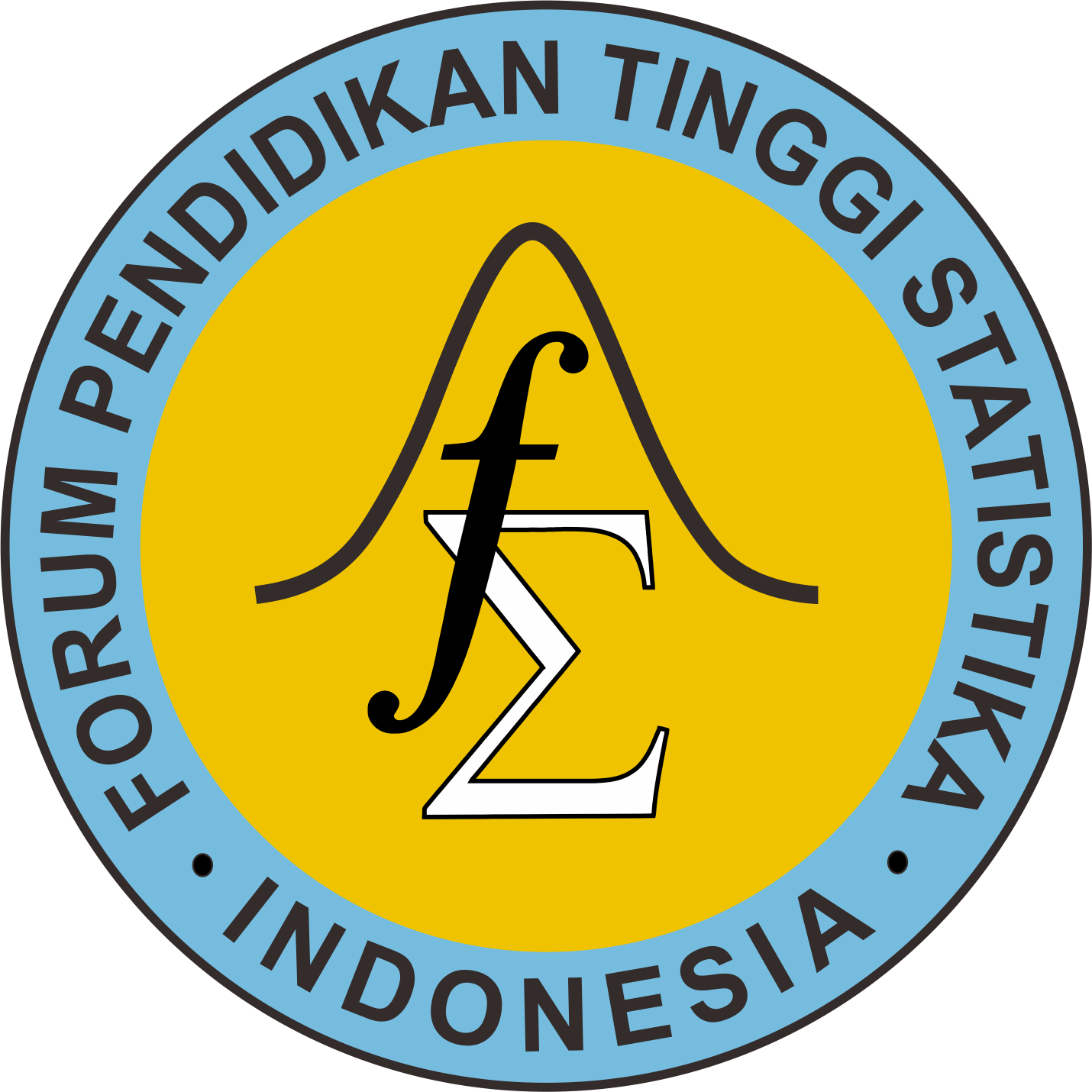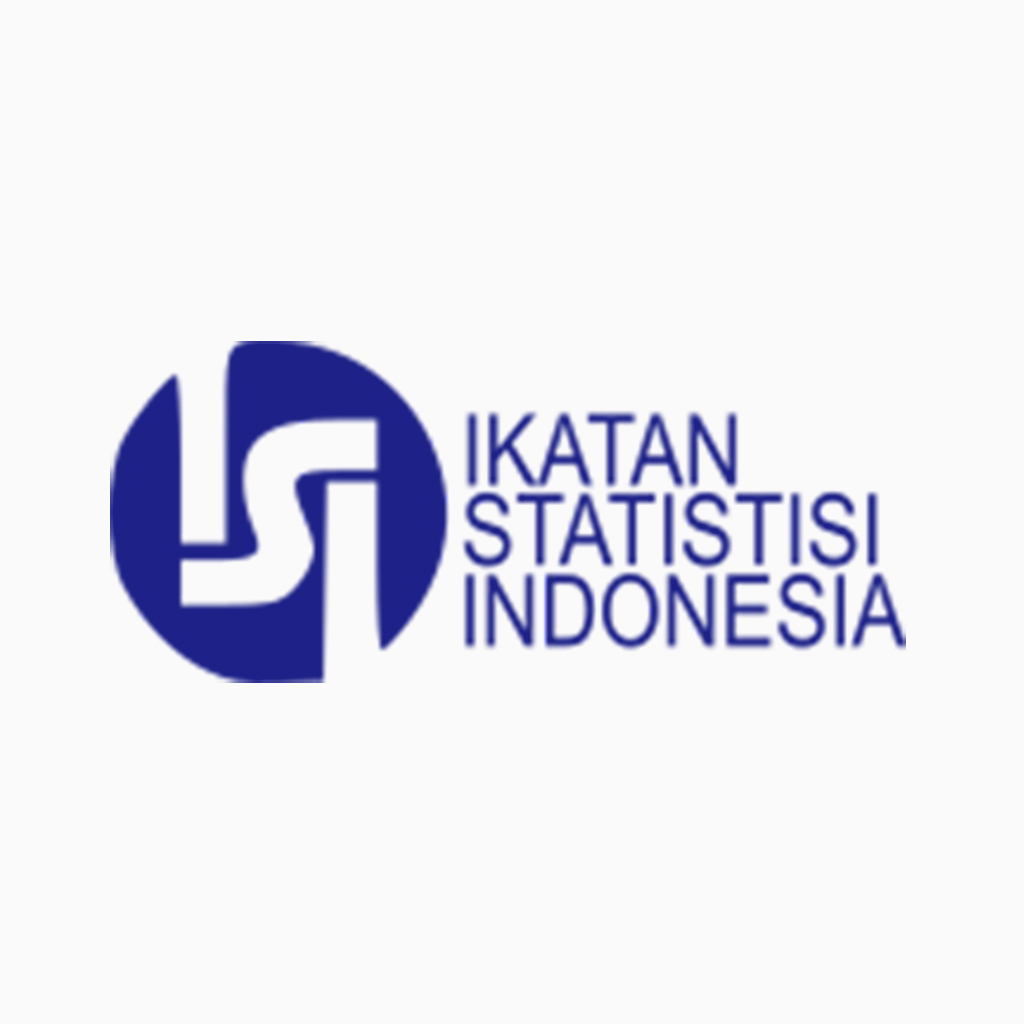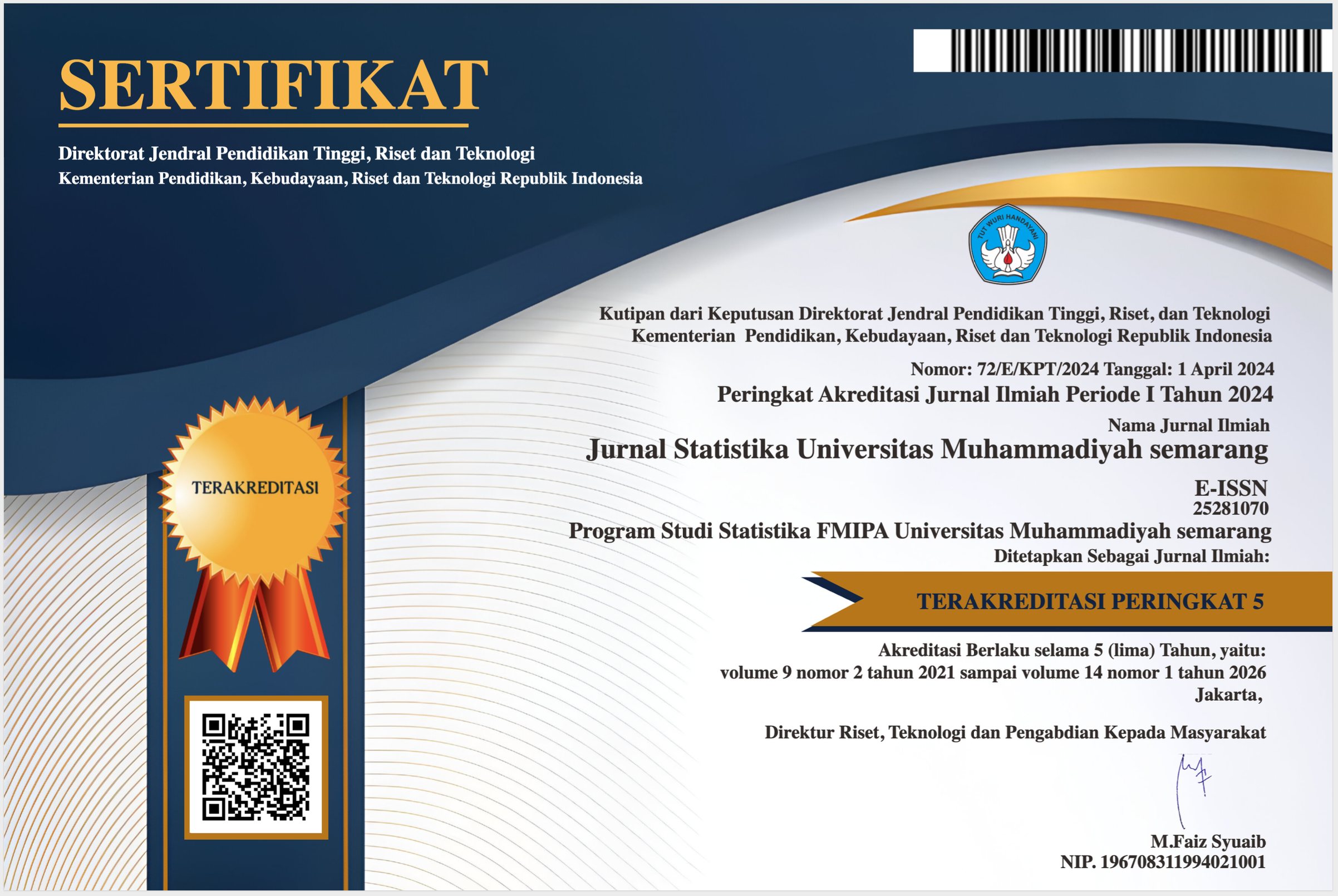APPLICATION OF BINARY LOGISTICS REGRESSION AND RANDOM FOREST TO CIGARETTE CONSUMPTION EXPENDITURE IN GORONTALO REGENCY 2022
(1) Statistics Study Program, Universitas Negeri Gorontalo
(2) Statistics Study Program, Universitas Negeri Gorontalo
(3) Statistics Study Program, Universitas Negeri Gorontalo
(4) Statistics Study Program, Universitas Negeri Gorontalo
(5) Statistics Study Program, Universitas Negeri Gorontalo
(6) Statistics Study Program, Universitas Negeri Gorontalo
(*) Corresponding Author
Abstract
Keywords
Full Text:
PDFReferences
Muhammad Firdaus, Ekonometrika. Bumi Aksara, 2021.
Setio, Panji Bimo Nugroho and Saputro, Dewi Retno Sari and Winarno, Bowo, “Klasifikasi Dengan Pohon Keputusan Berbasis Algoritme C4. 5,” PRISMA, vo;. 3, pp. 64-71, 2020.
Iut Tri Utami, Fadjryani Fadjryani, and Diah Daniaty,”Perbandingan Klasifikasi
Status Pendonor Darah dengan Menggunakan Regresi Logistik dan K-
Nearest Neighbor”, Jurnal Aplikasi Statistika & Komputasi Statistik, vol. 12, no. 1, pp. 1–1, Jun. 2020, doi: https://doi.org/10.34123/jurnalasks.v12i1.217.
Samad, Mohammad Ardani, “Bab 4 Statistik Deskriptif,” Statistik Kesehatan: Teori dan Aplikasi, pp. 33, 2022.
Krisna Wansi Patunduk, R. Hidayat, Avini Avini, Sumarni Sumarni, Ananda Pratiwi, and Harbianti Harbianti, “Pemodelan Pasien Covid-19 Di Kota Palopo Dengan Regresi Logistik (Studi Perbandingan Regresi Logistik dan Analisis Survival),” Proximal, vol. 5, no. 2, pp. 260–269, Aug. 2022, doi: https://doi.org/10.30605/proximal.v5i2.1963.
E. Roflin, Freza Riana, Ensiwi Munarsih, Pariyana, and Iche Andriyani Liberty, Regresi Logistik Biner dan Multinomial. Penerbit NEM, 2023.
T. Purwa, “Perbandingan Metode Regresi Logistik dan Random Forest untuk Klasifikasi Data Imbalanced (Studi Kasus: Klasifikasi Rumah Tangga Miskin di Kabupaten Karangasem, Bali Tahun 2017),” Jurnal Matematika, Statistika dan Komputasi, vol. 16, no. 1, p. 58, Jun. 2019, doi: https://doi.org/10.20956/jmsk.v16i1.6494.
R. Susetyoko, Wiratmoko Yuwono, E. Purwantini, and N. Ramadijanti, “Perbandingan Metode Random Forest, Regresi Logistik, Naïve Bayes, dan Multilayer Perceptron Pada Klasifikasi Uang Kuliah Tunggal (UKT),” Jurnal infomedia : teknik informatika, multimedia, dan jaringan, vol. 7, no. 1, pp. 8–8, Jun. 2022, doi: https://doi.org/10.30811/jim.v7i1.2916.
Badan Pusat Statistik, Kabupaten Gorontalo dalam Angka Gorontalo Regency in Figures 2022. 2022.
A. Marianti and B. Prayitno, “Analisis Pengaruh Faktor Sosial Ekonomi, Pendapatan dan Harga Rokok Terhadap Konsumsi Rokok di Indonesia,” Economie: Jurnal Ilmu Ekonomi, vol. 1, no. 2, pp. 93–106, Jan. 2020, doi: https://doi.org/10.30742/economie.v1i2.1126.
K. M. N. Perera, G. N. D. Guruge, and P. L. Jayawardana, “Household Expenditure on Tobacco Consumption in a Poverty-Stricken Rural District in Sri Lanka,” Asia Pacific Journal of Public Health, vol. 29, no. 2, pp. 140–148, Feb. 2017, doi: https://doi.org/10.1177/1010539517690225.
A. R. S. Darwanto, Taza Luzia Viarindita, and Yekti Widyaningsih, “Analisis Regresi Logistik Binomial dan Algoritma Random Forest pada Proses Pengklasifikasian Penyakit Ginjal Kronis,” Jurnal Statistika dan Aplikasinya, vol. 5, no. 1, pp. 1–14, Jun. 2021, doi: https://doi.org/10.21009/jsa.05101.
Riska Yanu Fa'rifah and B. Poerwanto, “Penerapan Regresi Logistik Dalam Menganalisis Faktor Penyebab Peningkatan Angka Kematian Bayi,” d’ComPutarE: Jurnal Ilmiah Information Technology, vol. 9, no. 1, pp. 52–55, Jan. 2019.
Nanang Husin, “Komparasi Algoritma Random Forest, Naïve Bayes, dan Bert Untuk Multi-Class Classification Pada Artikel Cable News Network (CNN),” Jurnal Esensi Infokom Jurnal Esensi Sistem Informasi dan Sistem Komputer, vol. 7, no. 1, pp. 75–84, May 2023, doi: https://doi.org/10.55886/infokom.v7i1.608.
L. B. C. Tanujaya, B. Susanto, and A. Saragih, “The Comparison of Logistic Regression Methods and Random Forest for Spotify Audio Mode Featurre Classification,” Indonesian Journal of Data and Science, vol. 1, no. 3, Dec. 2020, doi: https://doi.org/10.33096/ijodas.v1i3.16.
Article Metrics
Abstract view : 68 timesPDF - 45 times
DOI: https://doi.org/10.26714/jsunimus.13.1.2025.14-22
Refbacks
- There are currently no refbacks.
Copyright (c) 2025 Jurnal Statistika Universitas Muhammadiyah Semarang
Editorial Office:
Department of Statistics
Faculty Of Mathematics And Natural Sciences
Universitas Muhammadiyah Semarang
Jl. Kedungmundu No. 18 Semarang Indonesia
Published by:
Department of Statistics Universitas Muhammadiyah Semarang
This work is licensed under a Creative Commons Attribution 4.0 International License








2.png)



